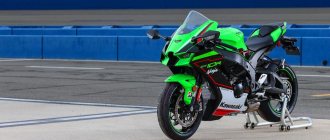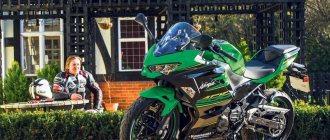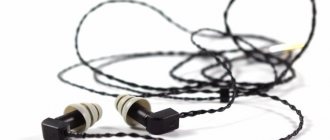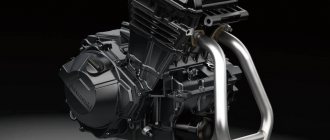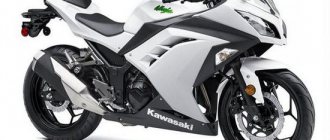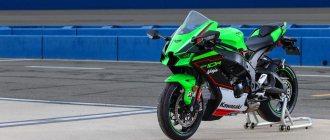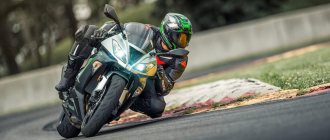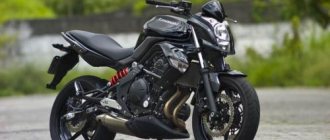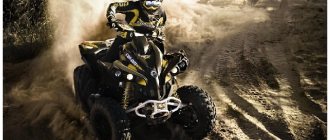“Did I buy a motorcycle to ride according to the rules?!” - this can often be heard from fit, vigorous guys in sports leather. It’s an outlandish phrase, if you extrapolate it, for example, to a weapon or even a chainsaw - it turns out that a person bought a crap that dominates his brain so much that he decides to forget about the comfort and safety of others.
But there are motorcycles on which the quietest and most law-abiding person effortlessly overcomes first the permitted speed threshold, and then the sound barrier, if he does not pull himself in time. And the Kawasaki Z H2 SE is one of them.
Kawasaki Z H2 SE 2021
A little soul-searching before riding Kawasaki's supercharged naked bike won't hurt: it's worth at least reminding yourself that you're going for the road, not the track, because in the saddle of the Z H2 SE you somehow forget that this is just a road bike.
It seems that Kawasaki did everything to remember this: comfortable fit, comfortable position of the hands on the grips of medium handlebar height, both feet are freely placed on the ground. Weight - 241 kg, clearly not the most sporty, makes you even wonder how this elephant will waddle in corners.
A short press of the electric start button awakens the bike with a deep growl from the left side of the H2, even though the muffler is on the right. That's right, it's the intake air intake on the front fairing that roars air into the supercharger, spinning at up to 110,000 rpm. The sound clearly makes it clear that under the rather comfortable saddle is a real monster, which can barely restrain itself while its careful rider, carefully moving his legs, leads him onto the road. A monster, but superbly trained and with excellent manners: his power is extremely linear and predictable, as long as he feels an unsteady hand on the right grip.
You just have to open the gas a little more boldly - the H2 understands that it is possible. You can pull the rider’s hands! You can yank so hard your teeth rattle! It’s POSSIBLE to make the poor fellow huddled in the saddle smile from ear to ear! It is POSSIBLE to pick up a speed that seems impossible to drive at!
Kawasaki Z H2 SE 2021
Listen, how can you ride it according to the rules?! This is really not what he was created for. Yes, it is equipped with many systems that allow you to harness the power of the supercharger motor, but the main brake still remains somewhere inside the helmet. And this Kawasaki does not provide an assistant for it.
Motorcycle Kawasaki H2 SX Ninja 2021 review
Description of the Kawasaki H2 SX Ninja 2021 motorcycle is in the queue for publication of the article. Announcement: Today, for almost every new motorcycle that comes into being, marketers strive to carve out their own niche. This one is a road sport, this one is a recreational enduro. But what class should we include a motorcycle that has a little bit of everything? A good bike should have a reliable engine, comfortable ergonomics and simple controls...
Kawasaki H2 SX Ninja is a motorcycle not sold in Russia, equipped with a very high power 197.3 hp engine. Despite the fact that good models of motorcycles have a very respectable price, and the season for their use is relatively short, the motorcycle market is developing rapidly. And if you believe the words of dealers, then some models of recently released motorcycles are selling like hot cakes at the beginning of the season, and the models brought to Russia are clearly not enough to fully satisfy consumer demand.
A motorcycle has long ceased to be an alternative to a car, and the times when this equipment was bought only because there was not enough money for a full-fledged car are forgotten. Nowadays, two-wheelers can be called technological marvels in many cases, and their cost can be compared with that of prestigious cars.
Many people have started buying motorcycles for hobby purposes as riding or even collecting them has become a good pastime for many people. Many motorcycles, for example the Kawasaki H2 SX Ninja, whose technical characteristics allow the model to be called a prestigious brand, are in demand among both beginners and experienced motorcyclists.
Motorcycles with an engine capacity of 998 cc / 60.9 cu in. see, appeared as a result of long work of inventors who sought to create a model that was not inferior in characteristics to other versions of the motorcycle. In some cases, these models are not only not inferior, but also ahead of other motorcycles, as they have minimal fuel consumption and other excellent parameters.
Motorcycles with an engine capacity of more than 400 kb. see, which includes the Kawasaki H2 SX Ninja - this category of motorcycles simply cannot claim the title of “motorcycle for a beginner.” On the contrary, this is already a serious technique that requires certain control of motorcycle equipment with a smaller engine capacity. Yes, she attracts more attention, she is the most beautiful, fast, interesting and there is a huge selection of models. But as power increases, the weight of the motorcycle inevitably increases. In this class you are unlikely to find motorcycles lighter than 180 kg, unless they are the latest motorcycle models.
Go to the entire range of Kawasaki motorcycles, on this page you can find Kawasaki H2 SX Ninja motorcycles from other years of production and information about them
Electronic assistants Kawasaki Z H2 SE 2021
But there is a lot more provided. KECS, that is, electronically controlled suspensions, work in conjunction with an inertia measuring device, on the basis of which KTRC traction control, launch control (KLCM), and smart ABS (KIBS) are implemented, combined in an assistant called KCMF - system cornering control, literally. This system, based on data from several chassis and engine sensors, provides a smooth ride while leaning, protecting the rider from various troubles.
Sounds like something dodgy? And so it is. Almost everything on the H2, like many of Kawasaki's top models, is electronically adjustable, except perhaps the spring preload of both suspensions. Naturally, all electronic features have a lot of settings, displayed on a 4.3-inch TFT screen and controlled from the steering wheel. Moreover, all this happens quite intuitively and clearly, just flip through the manual a little and practice.
But sooner or later, poking around in the menus ends and the trip begins. On such a motorcycle you understand the phrase from the song “the only things better than mountains are mountains” - it is simply created for riding along beautiful serpentines. But you still have to get to the serpentine, so the suspensions are softer for straight sections of the highway, “turn the gas and fly.” The H2 is equipped with several factory driving modes: Sport, Road, Rain. As on most modern motorcycles, when turned on, the mode sets programmed values for most of the important settings: traction characteristics, traction control and suspensions in this case. Plus, the H2 has three programmable User Modes where suspension settings are manually set. The power level and traction control in Custom modes are also adjustable, and you can, for example, set the suspension in one mode to be stiffer for fast pace, in the second - medium hard for city driving, and in the third - softer for comfort on the highway, and then change them without getting up from the motorcycle. True, you won’t be able to do this on the go—you need to stop.
Kawasaki Z H2 SE 2021
So, the soft smoothing of both suspensions is set - a 43 mm fork and a Showa Skyhook EERA monoshock - and the motorcycle floats on not the highest quality asphalt. On straight lines it moves confidently like a flying iron (or a fantastic glider, it’s not for nothing that a glider is so similar to “ironing”), that is, soft suspension does not mean loose or unbalanced. But when you turn, it turns out that the irons don’t fly: the backside begins to jump and sway even at the permitted speeds. This means that the smoothing on the rear suspension needs to be tightened. Here is the next straight line - and you can check what the engine is capable of.
Specifications
Technical characteristics of Kawasaki Ninja H2 (H2R):
| Model | Kawasaki Ninja H2 (H2R) |
| Motorcycle type | sport |
| Year of issue | 2015+ |
| Frame | steel lattice |
| engine's type | 4-cylinder, 4-stroke, in-line, supercharged (2-speed centrifugal supercharger) |
| Working volume | 998 cm³ |
| Bore/Stroke | 76.0 x 55.0 mm |
| Compression ratio | 8.3:1 – Ninja H2R 8.5:1 – Ninja H2 11.2:1 – Ninja H2 SX |
| Cooling | liquid |
| Number of valves per cylinder | DOHC, 4 valves per cylinder |
| Fuel supply system | Injector (DFI), 4x 50mm (dual injectors) – Ninja H2, Ninja H2R Injector (DFI), 4x 40mm (dual injectors) – Ninja H2 SX |
| Ignition type | digital transistor |
| Maximum power | 200.0 hp (147.2 kW) at 11000 rpm – Ninja H2 (2015-2017) 200.0 hp (147.2 kW) at 10,000 rpm – Ninja H2 (Southeast Asia, Thailand) 2015-2017 205.0 hp (150.8 kW) at 11000 rpm – Ninja H2 2018 200.0 hp (147.2 kW) at 10,000 rpm – Ninja H2 (Thailand) 2018 231.0 hp (170.0 kW) at 11500 rpm – Ninja H2 2019+ 171.0 hp (126.0 kW) at 9000 rpm – Ninja H2 (Southeast Asia) 2018+ 200.0 hp (147.2 kW) at 11000 rpm - Ninja H2 SX (Australia, Southeast Asia B3 model, Philippines) 150.0 hp (110.3 kW) at 8000 rpm - Ninja H2 SX (Southeast Asia B1 model) 170.0 hp (125.0 kW) at 9000 rpm – Ninja H2 SX (Thailand) 310.0 hp (228.0 kW) at 14,000 rpm - Ninja H2R 326.0 hp (240.0 kW) at 14,000 rpm - Ninja H2R (with RAM Air inertial supercharging) |
| Maximum torque | 133.5 Nm (13.6 kg*m) at 10500 rpm – Ninja H2 2015-2017 140.4 Nm (14.3 kg*m) at 10,000 rpm – Ninja H2 (South-East Asia, Thailand) 2015-2017 133.5 Nm (13.6 kg*m) at 10,000 rpm – Ninja H2 2018 141.7 Nm (14.4 kg*m) at 11000 rpm – Ninja H2 2019+ 140.4 Nm (14.3 kg*m) at 10,000 rpm – Ninja H2 (Thailand) 2018+ 133.5 Nm (13.6 kg*m) at 9000 rpm – Ninja H2 (Southeast Asia) 2018+ 137.3 Nm (14.0 kg*m) at 9500 rpm - Ninja H2 SX (Australia, Southeast Asia B3 model, Philippines) 128.5 Nm (13.1 kg*m) at 8000 rpm - Ninja H2 SX (Southeast Asia B1 model) 133.4 Nm (13.6 kg*m) at 8500 rpm – Ninja H2 SX (Thailand) 165.0 Nm (16.8 kg*m) at 12500 rpm – Ninja H2R |
| Clutch | Multi-disc in oil bath, hydraulic drive |
| Transmission | 6-speed |
| type of drive | chain |
| Front tire size | 120/70 ZR17 M/C (58W) |
| Rear tire size | 200/55 ZR17 M/C (78W) – Ninja H2 190/55 ZR17 (75W) – Ninja H2 SX 190/65 ZR17 (78W) – Ninja H2R |
| Front brakes | 2 discs, 330 mm, 4-piston radial calipers (KIBS ABS) – Ninja H2, Ninja H2R 2 discs, 320 mm, 4-piston radial calipers (KIBS ABS) – Ninja H2 SX |
| Rear brakes | 1 disc, 250 mm, 2-piston caliper (KIBS ABS) |
| Front suspension | 43mm inverted fork (fully adjustable), 120mm travel |
| Rear suspension | pendulum cantilever with Öhlins TTX36 monoshock absorber (fully adjustable), stroke - 135 mm |
| Motorcycle length | 2085 mm – Ninja H2 2135 mm – Ninja H2 SX SE 2070 mm – Ninja H2R |
| Motorcycle width | 770 mm – Ninja H2, H2R 775 mm – Ninja H2 SX SE |
| Motorcycle height | 1125 mm – Ninja H2 1205 mm – Ninja H2 SX 1260 mm – Ninja H2 SX SE 1160 mm – Ninja H2R |
| Wheelbase | 1455 mm – Ninja H2 1480 mm – Ninja H2 SX SE 1450 mm – Ninja H2R |
| Seat height | 825 mm – Ninja H2 835 mm – Ninja H2 SX SE 830 mm – Ninja H2R |
| Minimum ground clearance (clearance) | 130 mm |
| Acceleration 0-100 km/h (0-60 mph) | 2.6 sec[1] |
| Maximum speed | 299 km/h – with limiter |
| Gas tank capacity | 17.0 l – Ninja H2, Ninja H2R 19.0 l – Ninja H2 SX |
| Motorcycle weight (curb) | 238 kg – Ninja H2 256 kg – Ninja H2 SX 260 kg – Ninja H2 SX SE 216 kg – Ninja H2R |
Engine Kawasaki Z H2 SE 2021
For a lot. The H2 easily lifts the front wheel in third gear (with a little help) and teleports forward with gusto. The main thing is to make sure that the road ahead is empty - in the blink of an eye you can catch up with a car that seemed to be far ahead. It accelerates very, very quickly, and yet incredibly linearly. On the dyno it showed a peak of 167.2 hp at 10,580 rpm and almost 119 Nm at 8,560 rpm, but the word “peak” is not entirely acceptable here: the torque curve is almost flat from 2000 and most closely resembles the traction of an electric vehicle. How can you resist the temptation to type more and more?
Actually, it’s possible if you set the cruise control. This is done with literally a couple of buttons, but even such a simple and reasonable action seems like real asceticism.
Kawasaki Z H2 SE chassis
At the foot of the mountains, the suspensions are switched to “sport” mode, that is, harder. And - go ahead, watch how this heavy, powerful monster will behave on the serpentine road. It has four levels of traction control: Off, 1,2 and 3. The maximum level is intended for rain and slippery surfaces, and is generally similar to the Rain riding mode. With the third traction level set, the motorcycle will no longer drag the front wheel - as soon as a difference in the speed of rotation of the front and rear wheels is detected, the engine immediately reduces traction. The traction control works incredibly smoothly and imperceptibly, simply, in fact, simulating a softer engine. Levels 1 and 2 are even less noticeable, but if you want to understand why a supercharged engine is needed at all, it’s better to turn off the traction control. Apparently, Kawasaki understands this, which is why they took care of this possibility.
Kawasaki Z H2 SE 2021
An interesting thing is electronic suspension with manual preload adjustment. When there is only one hand tool, you try to do everything with it, and in the end it turns out that yes, it’s really worth playing with the springs before delving further into electronic settings. For example, for a height of 180 cm and a weight of 75 kg, it turned out to be best to tighten the rear spring preload by 1.25 turns relative to the stock, tighten the smoothing (compression and rebound) of the rear to the maximum, then relax the preload in the fork by 2 turns, relax the compression by -2 and tighten hang up at +1. The rear spring, to be honest, could have been tightened a little more, but then you are faced with the fact that the rebound reserve has already been selected, and it would have been even better both in terms of handling and in terms of handling bumps.
The traction control is off, the available power is set to full, the suspensions are tuned - it's just beautiful. The engine is so torquey, even at the bottom - after 3000 - that it happily takes you uphill at low revs in third gear, and if it’s also a turn, then with a slight movement of your right hand it draws black stripes on the rear tire. An excellent quickshifter and a six-speed gearbox allow you to quickly and clearly shift into several gears in a row - you don’t need to pull the cat by the tail, squeezing and releasing the clutch, you don’t need to cover the gas to shift up - you just hold the throttle and pull the gearbox’s foot up, H2 sticks in with a pleasant sound next gear and teleports along the road without any sign of swaying. Shifting down is also very soft and smooth - the quickshifter gently sticks into the lower gear, and the slipper clutch and traction control work off excess traction. True, this applies more to active driving in the mountains, and when driving calmly at a city pace, downshifting sometimes occurs with a slight jerk.
A fun feature based on the inertia measurement device is the tilt angle indicators on the dashboard. One of them is a real-time histogram, that is, it is intended for viewing on the move, but while moving it is better to look at the road, especially at an angle. But the maximum tilt angle indicator is a good thing, not even for narcissism, but for understanding that you have configured the chassis correctly. For example, from a maximum of 53/54 degrees after adjustment, we managed to move up to 56/58 degrees. Here we also need to take into account the slope of the road, which made it possible to tilt the motorcycle deeper to the right, despite the presence of a muffler.
The H2 instrument panel is also capable of displaying average and instantaneous fuel consumption, power reserve, stopwatch, boost level, intake air temperature, ambient air temperature and coolant temperature, clock and much more.
The year of owning the Kawasaki Ninja SX SE has almost come, it’s time to sum up some results, describe your impressions, and highlight the pros and cons.
At the time of writing this post, 11 thousand km have been covered on the motorcycle. The motorcycle was purchased in September 2021 consciously through thorns of thought, comparisons and doubts, by viewing available foreign and Russian-language reviews, of which there were very few at that time; a ride test was not provided by dealers. But, at a certain moment, the stars aligned and the decision was ripe. The first meeting in the seller's showroom was exciting; the motorcycle greeted me fully armed. I won’t go into much detail about the technical specifications and equipment; all this can be easily read on the manufacturer’s official website; I will only note the main differences from the younger SX configuration and the richer SX SE+, which went on sale in 2021. SX SE is additionally equipped with: - quickshifter compared to SX; — enlarged windshield; — central stand; — heated handles; — cornering lights; — color display; — linings for the tank. In addition to the above, SX SE+ has, in addition to the above, electronic suspension adjustments, Brembo brakes, the ability to integrate with a smartphone and wider settings for driving modes, self-healing paintwork... Other differences are possible, I have listed the main ones. All trim levels have the same 200 hp liter engine with a turbocharger.
Kava stood in her assigned place in the parking lot.
The stock exhaust system canister was replaced, and at high speeds the pleasant sound of a World War II fighter approaching a target appeared. Exhaust gases from the stock can had previously melted the license plate frame; by replacing the can, this problem was solved.
Factory sliders were also installed.
This was the end of the tuning due to the lack of interesting proposals at that time.
Well now, let's go! The first ride was apprehensive; the thought that under you was a 200-horsepower machine, seasoned with a turbocharger, restrained you from rash actions until you properly rolled into the motorcycle. The first sensations are the feeling of endless power, while it is smoothly spread over the entire torque shelf, which makes the motorcycle comfortable both when moving at low speeds and when flying far beyond 200 km/h. The engine starts to go out after about 260-270 km/h, then it accelerates with difficulty (I haven’t tried it myself, the older guys told me). When you need it, you turn off the gas a little more sharply and a jerk occurs akin to flying on a fired projectile. Vibrations are practically absent, they are there deep in the engine, but they are transmitted barely noticeably to the steering wheel and footrests and do not bother me at all; on long journeys this plays a big role for me.
The motorcycle's handling is very precise and predictable, the motorcycle feels lighter than its almost 250 kg, but at the same time it stands confidently on the highway even with a serious side wind. The lack of a steering damper is disappointing; when accelerating sharply, a slight wobble sometimes appears. It's a pleasure to make arcs and take turns on it. My version has regular (not Brembo) brakes, they are enough for my riding skill, the feedback is good, the front brake is equipped with cornering ABS, which allows you to brake with it when turning, but I wouldn’t get too carried away with trail braking, you get used to it and you can be very surprised by your jaw on the asphalt on another motorcycle without this gadget. Two engine braking modes can be configured; I tried playing with this option, but did not notice any significant differences. The quickshifter delivers in both directions... now this is one of the main “must-have” items when choosing a motorcycle in the future, it works clearly, without jerks or jambs, no worse than on motorcycles of one German brand and definitely better than on motorcycles of one Italian brand. Disabled. The suspension on my version is manually adjusted, I try not to mess with the factory settings, they usually suit me. The suspension is stiff like a sports car, and this motorcycle does not tolerate bad road surfaces. The motorcycle has three levels of engine power settings (LOW, MEDIUM and FULL), the modes really differ in the engine response, and you yourself feel this difference very clearly, I recommend starting with MEDIUM. Traction also has three levels and can be completely turned off (in the city I set it to one, on a long journey I set it to three in order to avoid surprises). The display is color and informative, has several modes, and also manually switches to a dark night theme. It reflects a lot of information, but is readable well and does not glare in the sun. Among the interesting things, it shows the level of redistribution of the load of the front and rear axles during acceleration and braking, as well as the dynamic tilt angle and the maximum tilt angle, which greatly provokes experiments. Nearby there is a socket for charging gadgets. The remote controls are made of high quality with good ergonomics; at the end of the post I wrote a few of my minor wishes regarding equipment. The landing is quite aggressive, more sporty than tourist, not for the ShKMG, of course, but it is conducive to high-speed shooting at close and long distances. But in general, the load on the back and arms is tolerable. The legs are protected from headwind and rain by plastic, the large windshield protects the body, there is a little bit of air in the head, but there is no chatter. The footpegs are located more conveniently than on a sportbike, which allows you to stand up when driving over uneven surfaces and to ventilate your butt during a long drive; if you wish, you can stand up on the footpegs to your full height, resting your feet on the tank. The seat is moderately comfortable, I travel without any 3D meshes or other devices, its size allows me to stretch my butt on long trips by moving along and across it. In traffic jams, even in the hottest weather, the heat from the engine does not become unbearable, which is a big plus when operating around the city. There is a glove compartment under the passenger seat that holds tools, a Swiss Army knife, a wheel lock, and a small can of chain lube. During rain and washing, the contents get wet, but are also quickly blown out, but things that are valuable to your heart should not be stored. The motorcycle is used almost daily for trips around the city, weekend trips and long-distance trips. It turned out to be quite universal, of course it’s not a street between the rows, but you get used to it quite quickly. Motorcycle mirrors are located at the level of passenger car mirrors.
Kava was bought for long-distance riders and in June 2021, the first serious trip was carried out from Moscow to the village of Novomikhailovsky in the Krasnodar Territory with the aim of attending the Russian stage of the MXGP 2021 World Motocross Championship. On the first day, 1060 km were covered from Moscow to Rostov-on-Don , then a short distance to Krasnodar to visit relatives about 260 km, and on Saturday morning departure directly to the Championship in Orlyonok. The total length of the route is 1480 km. The optimal cruising speed is 150-170 km/h, at higher speeds it starts to blow a little, after 180 km/h it starts to reach the tank, and the consumption begins to increase unacceptably. The range of 400 km declared by the manufacturer on one fill-up with an 18-liter tank can probably be achieved at a speed of 90 km/h, no more. In reality, refueling is done every 250 km, like all similar motorcycles. Upon arrival in Krasnodar, it was discovered that the stock rear Bridge had been worn down to the court, having traveled a total of 6,500 km. Probably the excess power of the motorcycle is taking its toll, or maybe white makes me look fat...
The bridge in Krasnodar was replaced by a Metzeler, which has so far covered 4,500 km without incident. Briefly about the purpose of my trip, this is not the first time that a stage of the MXGP World Motocross Championship has been held on the Orlyonok track, a world-class event with the participation of the top riders of the planet, I recommend visiting! A flurry of emotions is guaranteed! Next year this event is planned for May 17th. Kava is heating up in the south. As a reward for the long journey and worn-out tires, the jersey of the bronze medalist of the Russian MXGP stage, Jeremy Seaver, arrived after the award ceremony. But let's get back to the motorcycle. The return journey to Moscow was completed in one day, Monday, leaving Orlyonok at 8 am and arriving in Moscow around 10 pm. The photo below shows driving time, excluding stops. The central stand on the road makes it much easier to maintain the chain; after Voronezh I got caught in the rain, and here I had to thank the heated handles, rain cover and traction, which saved me a couple of times on wet markings (remember, I wrote above that I prudently set it to three) at a decent speed. In general, it is possible to travel 1,500 km on this motorcycle in a day, on a relatively good road, being in a healthy state of body and spirit. I won’t describe the ringing of bones, the breaking of muscles and the noise in my head at the end of the day, all this has already been described more than once in detail before me, in the morning I expected my back to say “come on, goodbye!”, but this surprisingly did not happen. At the end of June, another small long-distance trip was undertaken with a total mileage of 1000 km per day, this distance is quite easy on this motorcycle. A couple more photos.
Three maintenance services were carried out during the year: 1 thousand after running-in, 5 thousand and 10 thousand. After wintering at 2.5 thousand, the oil was changed on our own initiative. After 6500 km, the stock Bridge was replaced with a Metzeler due to wear. No breakdowns or other complaints were identified during the year of operation. I did not keep any fuel consumption calculations.
The bottom line is the pros and cons. Let's start with the cons. — lack of a steering damper, this really needs to be eliminated by installing a damper (if good people know where to find it, tell me in the comments, I haven’t found it yet); — rapid wear of stock tires. There are a number of small wishes that, in my humble opinion, would bring the motorcycle, which claims to be the most technically advanced sports tourer, to perfection: - keyless access; — automatic switching off of direction indicators; — signaling of the exposed running board on the dashboard.
Now about the poles. - the engine and again the engine, with its locomotive endless thrust, even throughout the entire torque range. It feels like the motorcycle is taking you from place to place, and the throttle is like a precise equalizer for the speed of this transfer. - Brakes with excellent feedback. — control accuracy. - the versatility of the motorcycle. — moderately futuristic appearance. — the presence of heated grips, a central stand and a quickshifter in the base.
I am completely satisfied with the motorcycle, I got exactly what I wanted. He solves all the tasks assigned to him. And he constantly calls for a road trip... a very fast road.
Thanks to everyone who read to the end! Ride motorcycles!
Assistants Kawasaki Z H2 SE
The Kawasaki Z H2 SE is made to go fast, but going fast and starting fast are not the same thing. That's why it was equipped with launch control - without this function, the front wheel tends to take off when you open the gas in lower gears. Launch control is, in fact, a special type of traction control that allows you to start moving as efficiently as possible, without losing speed, but also without losing control of the motorcycle. You won’t be able to start more efficiently than launch control even if you want to - the electronics simply sense the engine an order of magnitude better and react an order of magnitude faster than a human, especially when it comes to lifting off the front wheel.
It's amazing how good this powerful thing is around town. It is obedient, controllable and agile, even when driving with a passenger. Minus a slight hiccup just after idle, the Kawasaki Z H2 SE is extremely smooth at any rpm and has no hiccups right up to the redline. There is surprisingly little vibration, despite the high-revving supercharger, and the saddle is surprisingly comfortable even at the end of a day on the road. The footrests are located comfortably, there is plenty of room for the legs, and the same applies to the seating position in general. The only caveat is that the driver's part of the seat is a little more compact than we would like, so the passenger seat sometimes reminds of its presence.
Consumption when driving at legal speeds is about 5.5 liters, and when driving dynamically in the range of 3000-7000 rpm, it reaches more than 8 per hundred. It makes perfect sense that a supercharged motorcycle can guzzle gas at a catastrophic rate when the engine is revved up properly. The instantaneous consumption indicator showed almost 34 liters per hundred a couple of times.
Brakes Kawasaki Z H2 SE
This voracious monster is stopped by a brake system from Brembo - Stylema monoblock calipers at the front , connected to the main brake cylinder by reinforced lines. In addition to being smaller and lighter than past Brembo models, the Stylema calipers also feature improved airflow to the pads and pistons. Plus, the braking system is equipped with KIBS - together they provide powerful, smooth and confident braking force and information. The rear brake periodically reminds you of ABS activation on bumps by pulsating the pedal. The front one is extremely powerful, informative right up to the point of ABS activation. When triggered, some of the information content is lost, but the braking force remains, except if the ABS is triggered due to an almost complete loss of traction.
Kawasaki Z H2 SE
Suspension and handling Kawasaki Z H2 SE
Showa suspensions are equipped with stroke sensors, that is, they are able to inform how folded they are. They allow you to find out the speed of the suspensions and their position - this information is transmitted to the ECU every 0.001 seconds, where, along with information about the angles of inclination and acceleration, wheel speeds, pressure in the front circuit of the brake system, it is analyzed and used to automatically adjust the compression and rebound smoothing. This system works quite effectively, adjusting the stiffness of the suspension according to the real situation.
But as great as the Kawasaki Z H2 SE is, it's not perfect. If we add response to the throttle at the beginning of the stroke and smooth out the rebound, it would become even better. Actually, what’s the matter with the gas: when opening the gas from a fully closed position, there is a small “lag”... not even a failure, not a plug, but a slight hitch - the suspension doesn’t even notice it, but it is still felt. It would also be nice to slightly change the angle at which the footpeg mounting plates are located so that you can turn your feet slightly inward - this would also give the bike a more compact feel, because the position of your feet makes it feel wide. It is clear that the design of the frame and motor do not allow it to be truly thin, but the devil is always in the details. However, this is a small price to pay for the incredible performance and chic handling of the Kawasaki Z H2 SE.
Kawasaki Ninja H2 SX - test drive
Large engine displacement has until now been the answer of motorcycle manufacturers to the growing demand for increased performance and efficiency.
But not at this time. Kawasaki responded with the supercharged Ninja H2 SX.
The motorcycle promises greater performance and efficiency from a certain engine size. That's why this is the most intriguing bike this year. A further increase in engine capacity has no prospects. That's why the Ninja H2 SX points us to a future where we can get more from less.
Engine.
Performance and economy were the main goal when creating the Ninja H2 SX, Kawasaki says. But not only to create something extreme like the H2, so a 998 cc four-cylinder in-line engine was taken. see to get the power of the ZZR1400 at 200 hp. and efficiency like the Versys 1000.
The engine has been revised to make it more practical for use on public roads. “This is not an H2 with a pillion seat,” Kawasaki emphasizes.
They're emphasizing this because they're concerned that many sport-tour buyers may be put off by the extreme power associated with supercharging.
No one should pull away. “Charged” does not mean aggressive. For the Ninja H2 SX, that means super powerful, yet versatile and controllable.
Between 10,000 and 12,000 the engine makes an unusual sound. According to Kawasaki, this sound is produced by the tips of the supercharger rotor blades. If it weren’t for this sound and the sticker on the engine, you might not even think that the motorcycle is supercharged.
Of course, the motorcycle can be extreme at higher engine speeds, but at the same time maintains smoothness and controllability on long trips. You can traverse straight roads quickly by shifting gears to keep the revs in the upper range, but you can ride more gently on winding roads by using the engine's low and mid ranges. The Ninja H2 SX will do both depending on your mood.
The engine has three power modes: low, medium and full. Low gives 50% of the engine's power throughout the entire rpm range, medium - 75%, and full... you can continue on your own.
Early throttle response is a common weakness on modern motorcycles due to strict emissions regulations and the Ninja H2 SX is no exception. When you carefully open the throttle, the power is delivered efficiently, but if you close the throttle slightly, the power is completely lost. Therefore, when cornering at slow speed or maneuvering slowly, it is very difficult to control the gas; it either suddenly disappears or suddenly appears. Changing the power modes to low or medium alleviates this problem a bit.
Control.
The Ninja H2 SX has a redesigned tubular steel frame like the H2, but is thicker in the main section and has a more complex tail structure to support the weight of the passenger and luggage.
The Ninja H2 SX comes in two versions. The base version weighs 256 kg, and the SE version weighs 260 kg.
On the first day of the test, I became aware of the effort required to quickly change the direction of the motorcycle. Kawasaki compares it to the Z1000SX, calling it “the newest member of the Z1000SX line.” And you wouldn’t think that the H2 SX is a “charged” version of the latter. The bike's weight is closer to the ZZR1400's 270kg than the Z1000SX's 135kg.
On the second day of testing with the side panniers removed, the bike felt more nimble, but only as much as any 260kg machine can feel.
This test day included a slalom between the cones on the track. After driving along the highway, I was able to notice how much easier the motorcycle is to handle without side panniers. The H2 SX weaves between cones with more ease and precision than you'd expect.
The driving position is exactly as it should be - sporty, but not extreme. The raised clip-ons transfer weight to the arms, but not too much so that you can easily spend two to three hours in the saddle.
On the first day of the test, I had to spend about 4 hours behind the wheel and at the end of the test I had to fidget in the saddle, despite the fact that initially it seemed comfortable.
Suspension.
The Ninja H2 SX has fully adjustable suspension at both the front and rear. The suspension is designed to “combine a comfortable ride and sporty performance on city streets and when traveling,” Kawasaki says.
This seems fair. The suspension provides comfort on long trips on both smooth and rough road surfaces. However, during the track slalom, faced with rapidly changing conditions, the suspension felt like it was struggling to do its job.
Brakes.
Front four-piston radial calipers provide braking that is powerful and precise, even for a bike of this power and weight. Gradually increasing finger pressure on the front brake lever produces impressive braking force.
The Ninja H2 SX comes with Intelligent Anti-lock Braking System (KIBS) and ABS with lean angle control. The track exercises also included hard braking. On a straight line at a speed of about 95 km/h, it was necessary to press the front brake sharply. The ABS could be felt activating, pulsing the brake lever as the Bridgestone S21 front tire clung to the tarmac for dear life, but the bike came to a controlled stop without the rear wheel lifting off.
The next exercise was a straight line race at a speed of about 270 km/h. A 260kg bike requires a lot of braking distance, so being inspired by braking confidence and grabbing the brake lever was a completely different, uncontrollable reaction.
The back of the motorcycle rose up and began to spin, and the front wheel locked up. But by releasing the pressure on the lever, the ABS worked and everything ended well.
Equipment.
In addition to power modes and ABS, the Ninja H2 SX has multi-level traction control and engine braking control. Working in conjunction with the IMU (accelerometer unit), the motorcycle adapts to the angle of inclination. The bike also gets cruise control and a slipper clutch.
In addition, the SE version is equipped with a dashboard with a TFT display, quick shifter, launch control and additional front optics. The latter consist of three LEDs on each side of the fairing and illuminate the road depending on the angle of inclination.
Other additions to the SE include a taller windshield, heated grips, a 12V power outlet, a center stand and green paint.
The launch control function means that when starting, you can hold the throttle open and simply release the clutch and the electronics will do everything for you.
Launch control limits the engine speed to 6000, because higher speeds will undoubtedly lead to the wheel falling off. You need to not just drop the clutch, but release it very quickly. In practice, this is quite difficult to do to get the electronics to work.
In fact, the start doesn't feel that fast for a 200 hp bike.
Nevertheless, in acceleration tests we were able to start without slipping or lifting off the front wheel and faster than without using the function.
The Ninja H2 SX features a two-way quick shifter that allows you to shift up and down gears quickly and easily.
Tall motorcyclists who also took part in the test drive complained that the wind protection was insufficient, but for an average-sized motorcyclist it was quite sufficient.
There were also complaints about too much torque in low gear. Again, this will not cause problems for the average tourist who does not use the motorcycle aggressively.
I would like the bike to have a semi-active suspension so that the suspension can be adjusted on the fly depending on road conditions.
Bottom line.
The Ninja H2 SX is a motorcycle whose main selling point is its supercharged engine, delivering hyperbike power but with better fuel economy. Average fuel consumption showed 6 l/100 km, as a result, a 19-liter fuel tank should be enough for 320 km.
This is the future of supercharging. And this is not only extreme power and ever-increasing engine sizes, but also better performance and efficiency. This makes the Kawasaki Ninja H2 SX the most exciting motorcycle of the year.
Technical characteristics.
Motorcycle: Kawasaki Ninja H2 SX SE
Engine: 998 cc, liquid-cooled, supercharged inline-four
Power: 200 hp at 11000 rpm
Torque: 137.7 N.m at 9500 rpm
Weight: 260 kg (basic version 256 kg)
Frame: birdcage made of high-strength steel
Brakes: front two 320 mm discs with radial monobloc four-piston calipers, rear one 250 mm disc with two-piston caliper
Suspension: Fully adjustable 43mm inverted fork, fully adjustable Uni-Track rear gas shock
Tires: Bridgestone S21s 120/70-17 front and 190/55-17 rear
Fuel tank capacity: 19 liters
Seat height: 835 mm
Colours: green/black (basic version - grey)
Available for purchase: March 2018
Summary
Overall, the 2021 Kawasaki Z H2 SE turned out great. The 998 cc engine equipped with a compressor and the familiar cage frame have been used on several models since 2015, including the purely track and incredibly fast Ninja H2 R, the more comfortable Ninja H2 SX SE+ and others, tailored for several similar but different segments . In short, the combination of frame and engine has already been time-tested. And this time it turned out to be a magnificent road animal, with an easy-going and balanced character. And with a sly cunning trick that tempts the owner into insolence.
REVIEW – 2021 KAWASAKI Ninja H2 SX SE+ – Supercharged monster for aggressive touring
The Japanese manufacturer promises to fully charge any trip with the updated KAWASAKI Ninja H2 SX SE+, which is presented for the 2021 model range in its third edition. Since the release of the first version, the top bike in the “sport tourer” line has become canonical for lovers of active long-distance cruising, and now it seems to have reached the peak of perfection.
The supercharged engine with an immodest volume of 998 cubic meters has been retuned for a smooth ride and maximum output in the mid and low rev range without losing the ability to quickly spin up at the top, the electronically controlled suspension itself adapts to the road surface, the new brakes work sharper and more clearly, and many functions can be controlled directly from your smartphone - this is not a complete list of the advantages that the Japanese have endowed their flagship bike in 2021.
The new color, which will catch admiring glances as the KAWASAKI Ninja H2 SX SE+ rapidly flies past, consists of three colors: Graphite Gray Metallic, Devilish Black Metallic and Sparkling Emerald Green. In addition to the impressive name and no less impressive appearance, the livery of the updated bike boasts increased strength and the ability to self-heal in areas of minor scuffs. The motorcycle does not need to be polished - the top layer of paint will heal minor damage and shine again with deep color.
The strict color of the KAWASAKI Ninja H2 SX SE+ is not without emerald green signature accents
2021 KAWASAKI Ninja H2 SX SE+ Engine
The Japanese have adapted the turbocharged 998 cc in-line engine of the sports KAWASAKI Ninja H2 to the conditions of tourist riding. To do this, it was necessary to increase the compression ratio, change the operating parameters of the supercharger, the profile of the camshaft cams and the elements of the intake/exhaust systems. The result of extensive work was a more “flexible” character of the engine, an increase in traction at low and medium speeds - the bike is easier to control when riding slowly. At the same time, adjusting the boost pressure allowed the engine not to lose its fighting spirit - as soon as you turn the throttle a little harder, the bike will respond with a characteristic whistle with colossal acceleration, steadily picking up speed in the high rev range.
Powerful 998 cc KAWASAKI Ninja H2 SX SE+ engine with a “zest” in the form of a supercharger
The nature of the changes in the KAWASAKI Ninja H2 SX SE+ engine is also indicated by its parameters. In the maximum power of the relatively pure “sport” H2, it lost 5 units - 200 hp. versus 205 for the KAWASAKI Ninja H2, but the torque has increased - 137.3 Nm versus 133.5 in favor of the sports tourer Ninja H2 SX SE+.
Secondary throttle valves, which are controlled electronically and allow the air supply to the cylinders to be dosed as accurately as possible, are responsible for the smoothness of the ride for the sake of comfort.
Another positive aspect of the engine modifications is the reduction of emissions into the atmosphere and fuel efficiency. The CO2 content in the KAWASAKI Ninja H2 SX SE+ exhaust is reduced by almost 60 g/km, and gasoline consumption is only 5.7 liters per hundred.
Updated KAWASAKI Ninja H2 SX SE+ chassis
The new hyper-tourer in a special edition for 2021 retains the sporty look - the bike still looks like the racing Ninja H2. At the same time, the modified frame design, saddle height and control placement allow the rider to choose a relaxed, close-to-upright riding position when riding in a quiet mode, or instantly squeeze into a “shrimp” position for active acceleration and passing high-speed sections of the path, merging with a powerful machine. behind the oversized windshield.
The bike's suspension has undergone a qualitative update. The front fork and rear shock absorber are controlled by the KECS electronic system. Active intelligent suspension based on Showa mechanical components and proprietary KAWASAKI electronics analyzes the quality of the surface under the wheels while in motion and automatically adjusts the damping, compression and rebound parameters to the condition of the track, speed, intensity of acceleration/braking and the selected mode. A similar scheme was first presented by the Japanese in 2018 for the track KAWASAKI Ninja ZX-10R SE, except that on the purebred sportbike the spring preload adjustment was left mechanical.
The colossal dynamics and exorbitant speed that a turbocharged monster easily develops require effective brakes. In 2019, the flagship sports tourer received new Brembo Stylema calipers on the front axle instead of the previously used monoblock M50 ones. Stylema calipers, which are smaller in size and weight, are better cooled and more accurately dose the force on the pistons due to the smaller volume of brake fluid; in addition, short mounting bolts increase the overall rigidity of the structure.
The front and rear brakes are complemented by the intelligent KIBS anti-lock braking system, which helps to effectively brake in a straight line and in corners with a feeling of minimal electronic intervention for the rider.
Massive Brembo M50 calipers are replaced by lightweight and productive Stylema
2021 KAWASAKI Ninja H2 SX SE+ exclusivity in detail
When updating the flagship sports tourer, the Japanese gave it a number of technological features that make riding even more enjoyable and comfortable. In terms of equipment, the bike fully justifies the Special Edition + prefix in the model designation.
Exclusive features of KAWASAKI Ninja H2 SX in SE+ version 2019:
Adaptive head light Cornering Lights, which illuminates the cornering area based on data from the IMU unit.
High resolution color TFT instrument cluster with quick access to integrated control modes: Sport, Road, Rain and Rider. The latter makes it possible to manually configure each parameter.
Rideology App technology for connecting a smartphone to the bike’s electronic system via Bluetooth. From your mobile device you can view data about the bike’s parameters, routes traveled, maintenance intervals, and also change the settings of most electronic systems.
Electronic launch control system KLCM, which prevents the front wheel from coming off when starting off at full throttle.
Improved KQS quickshifter, which allows you to quickly change gears up and down without a clutch, designed for sportbikes, but reconfigured for “civilian” riding.
Combined instrument panel KAWASAKI Ninja H2 SX SE+: analog tachometer with indicator lamps and TFT display with support for communication with the Rideology App smartphone
With the release of the updated KAWASAKI Ninja H2 SX SE+ sports tourer, the Japanese managed to expand the usual idea of motorcycle travel. In addition to the generally accepted concept of comfort and versatility for bikes designed to cover long distances, the creators propose to charge long rides with adrenaline from breathtaking shots during acceleration and the feeling of flight from marches at exorbitant speeds.
